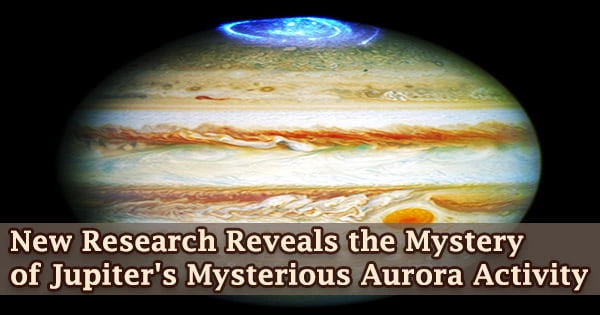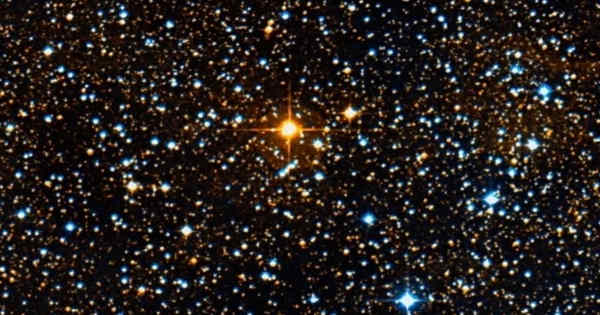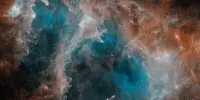Whether the brilliant lights flare over Earth or another planet, astronomers continue to be fascinated by auroral displays. The lights reveal information about the composition and operation of a planet’s magnetic field. New Jupiter’s study backs up this theory and adds to the mystery.
Professor of space physics Peter Delamere of the University of Alaska Fairbanks Geophysical Institute is part of a group of 13 worldwide researchers that have made a significant finding about the aurora of our solar system’s biggest planet.
The team’s findings were published in the journal Science Advances on April 9, 2021. Binzheng Zhang of the University of Hong Kong’s Department of Earth Sciences wrote the study article, titled “How Jupiter’s unique magnetospheric topology builds its aurora,” with Delamere as the principal co-author.
Research done with a newly developed global magnetohydrodynamic model of Jupiter’s magnetosphere provides evidence in support of a previously controversial and criticized idea that Delamere and researcher Fran Bagenal of the University of Colorado at Boulder put forward in a 2010 paper that Jupiter’s polar cap is threaded in part with closed magnetic field lines rather than entirely with open magnetic field lines, as is the case with most other planets in our solar system.
“We as a community tend to polarize either open or closed and couldn’t imagine a solution where it was a little of both,” said Delamere, who has been studying Jupiter since 2000. “Yet in hindsight, that is exactly what the aurora was revealing to us.”
Open lines are those that radiate from a planet but do not link with a matching point in the opposite hemisphere, instead of trailing out into space away from the sun. The aurora occurs on closed field lines surrounding a region known as the auroral oval on Earth, for example. It’s the high-latitude ring that circles the Earth’s magnetic axis, but not at either end.
However, on Earth, like on other planets in our solar system, there is an empty area known as the polar cap within that ring. It’s a region where magnetic field lines aren’t linked and aurorae are seldom seen as a result. Consider it like a faulty electrical circuit in your house: There are no lights if the circuit is not complete.
Jupiter, on the other hand, has a polar cap that reflects the aurora. Scientists were perplexed. The issue, according to Delamere, is that researchers’ thinking on Jupiter was so Earth-centric because of what they had discovered about Earth’s magnetic fields.
The Juno spacecraft, which arrived at Jupiter in July 2016, captured photos of the polar cap and aurora. However, those photos, along with others acquired by the Hubble Space Telescope, were unable to resolve the scientific debate over open vs. closed lines.
As a result, Delamere and the rest of the study team enlisted the aid of computer modeling. Their findings indicated a mostly closed polar region with a tiny crescent-shaped area of open flux, which only accounts for around 9% of the polar cap region. The others were aurora-active, indicating closed magnetic field lines. Jupiter’s polar caps, it turns out, have a mix of open and closed lines.
“There was no model or no understanding to explain how you could have a crescent of open flux like this simulation is producing,” he said. “It just never even entered my mind. I don’t think anybody in the community could have imagined this solution. Yet this simulation has produced it.”
“To me, this is a major paradigm shift for the way that we understand magnetospheres.”
What else does this reveal? More work for researchers.
“It raises many questions about how the solar wind interacts with Jupiter’s magnetosphere and influences the dynamics,” Delamere said.
Jupiter’s aurorally active polar cap might be related to the planet’s fast rotation (once every 10 hours vs once every 24 hours on Earth) and the size of its magnetosphere. Because both minimize the influence of the solar wind, the magnetic field lines in the polar cap are less likely to be ripped apart and become open lines.
And how much does Jupiter’s moon Io have an impact on the magnetic lines in Jupiter’s polar cap? Io is electrodynamically connected to Jupiter, which is unusual in our solar system, and as a result, it is continually stripped of heavy ions by Jupiter.
As the paper notes, “The jury is still out on the magnetic structure of Jupiter’s magnetosphere and what exactly its aurora is telling us about its topology.”
















